 |
 |
 |
| |
What happens to HCV incidence after WHO elimination goal is met? Agent-based modeling predicts sustained availability of direct-acting antivirals among people who inject drugs (PWID) is required to prevent returning to pre-elimination levels
|
| |
| |
EASL 2024 June 5-8 Milan Italy
"In the USA we are far behind and are not going to reach that goal for 2030"
Results: The model predicts that elimination can be achieved in the PWID population by 2030 for DAA enrollment rates >= 7.5% (75 per 1000 PWID). When DAA treatment is stopped in 2030, the rate of new chronic HCV infections rapidly increases and exceeds the WHO 2030 goal within 12 months, regardless of the enrollment rate prior to 2030.
Conclusion: Modeling results indicate that DAA scale-up of >7.5% is projected to achieve the WHO target of 90% HCV incidence reduction by 2030. HepCEP model simulations underscore the importance of DAA scale-up without any re-treatment prohibition to achieve significant reductions in HCV incidence when the rates of reinfection among PWID networks are high. Unrestricted re-treatment with enrollment rates of >= 7.5% should remain beyond 2030 to maintain the WHO elimination goal and prevent resurgence of HCV incidence to current levels. Our data also underscore the importance of other intervention strategies to maintain the elimination goal, such as syringe exchange programs and vaccines.
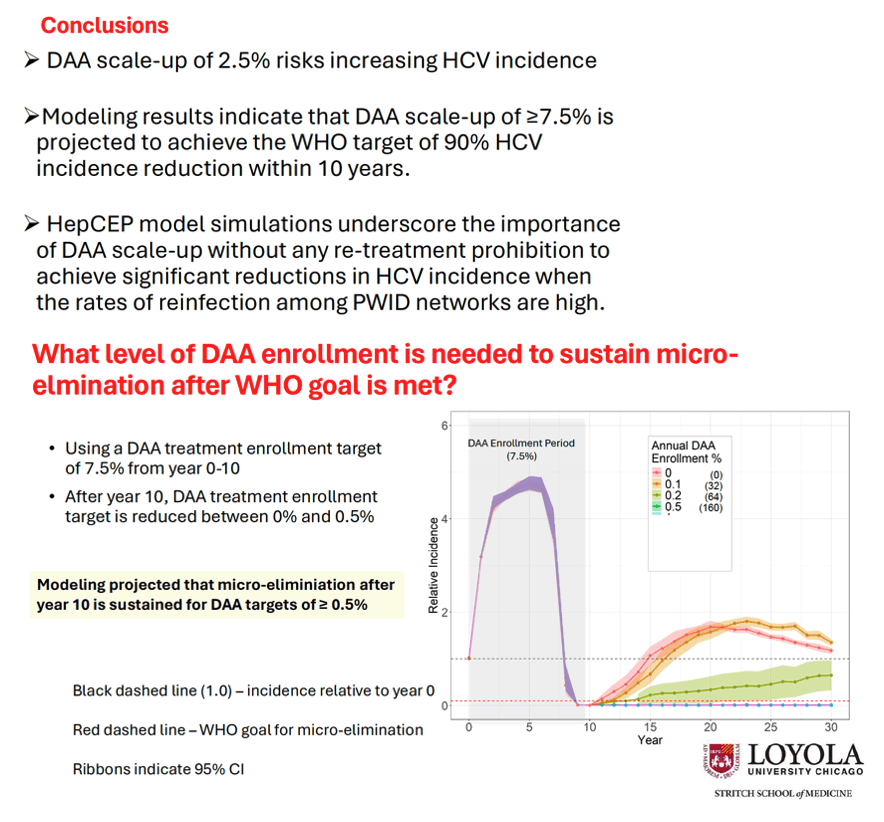
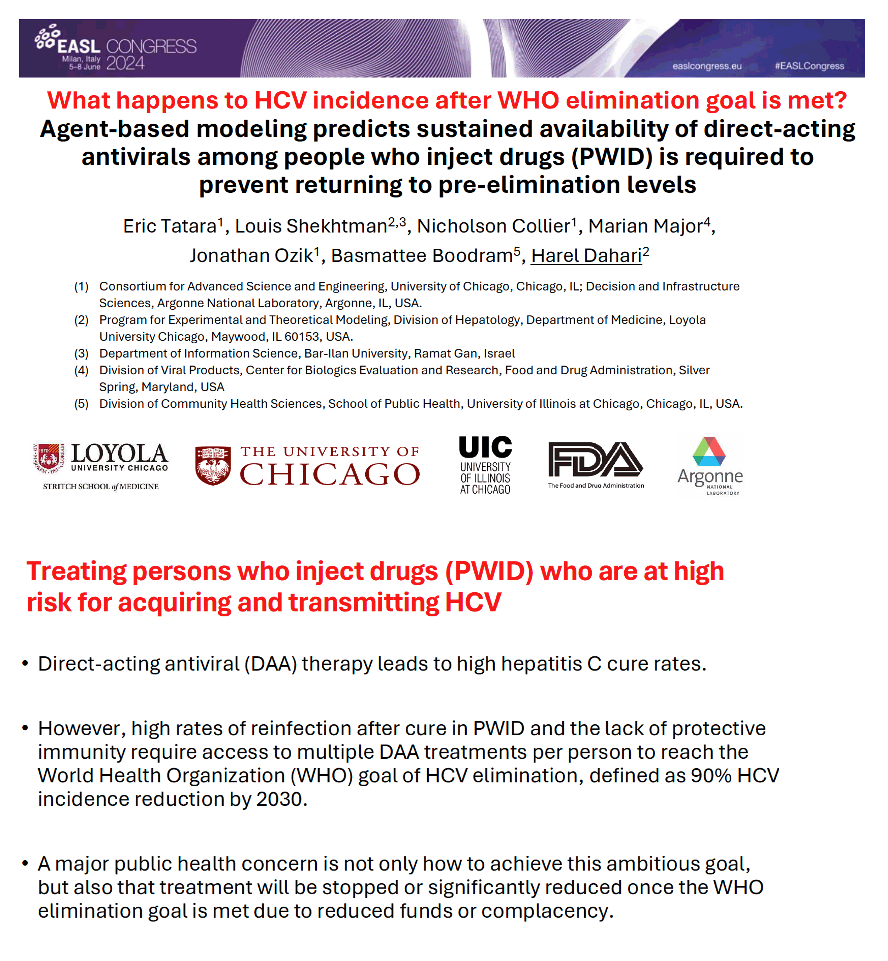
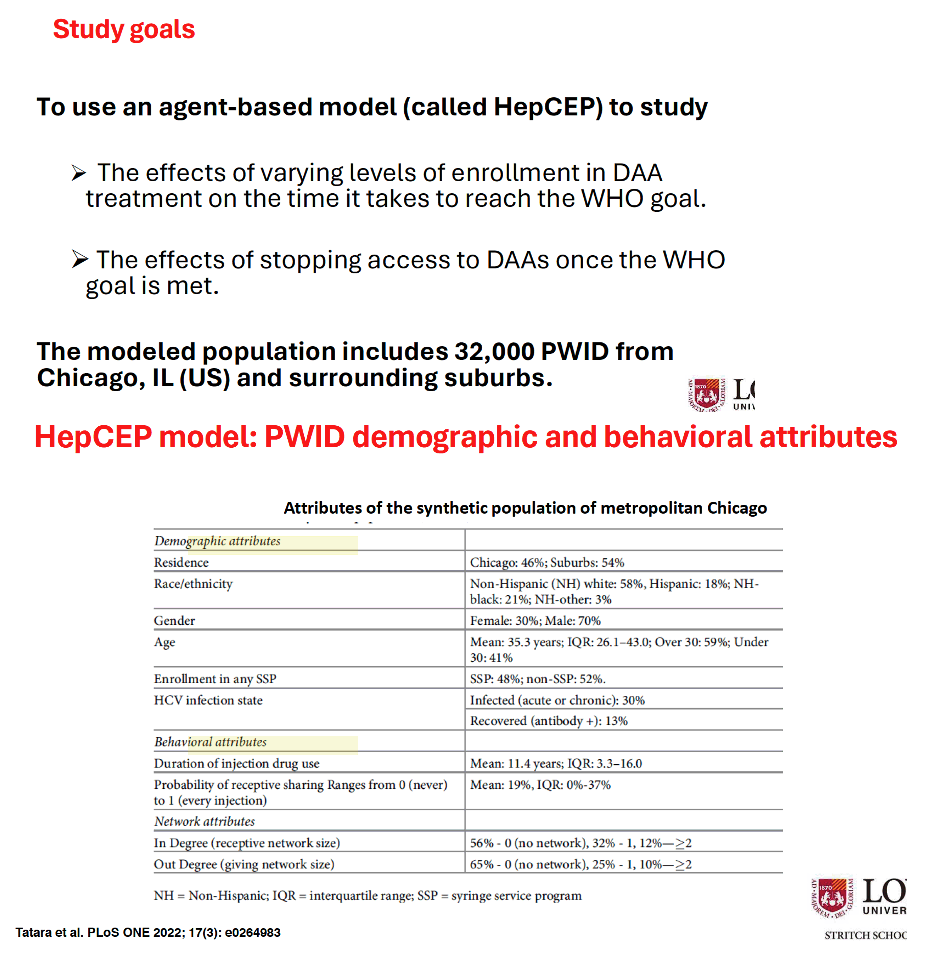
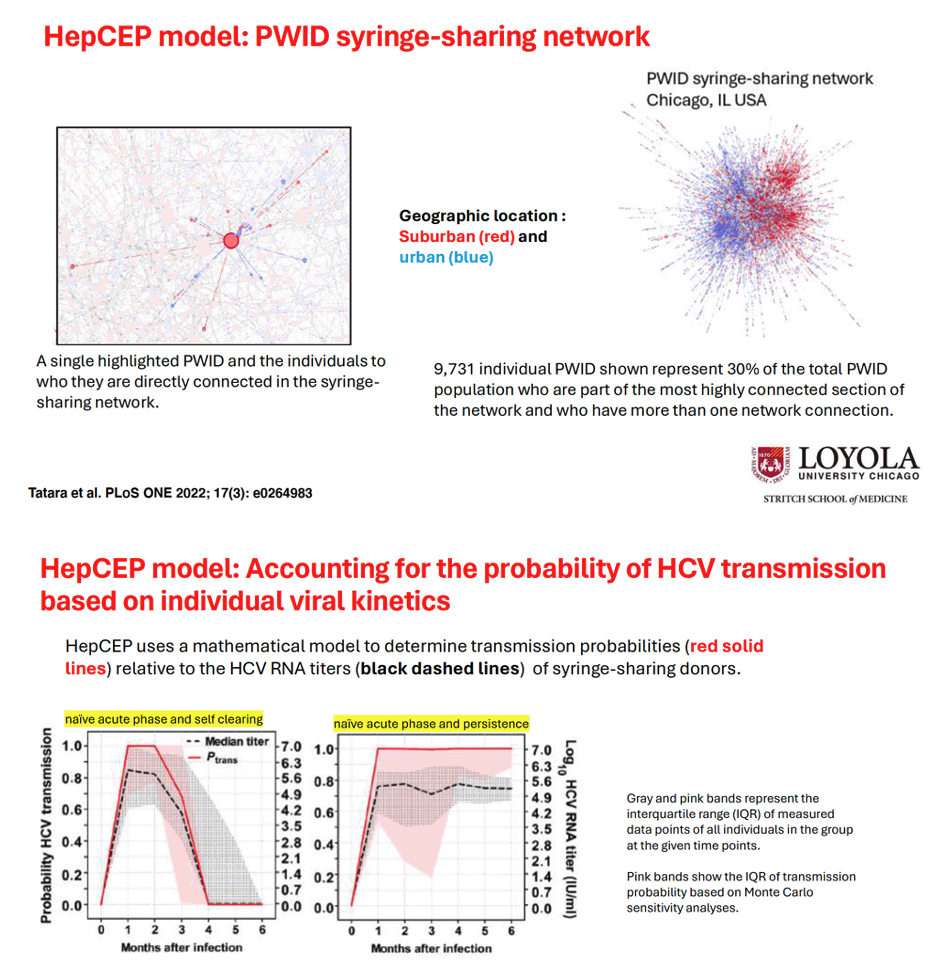
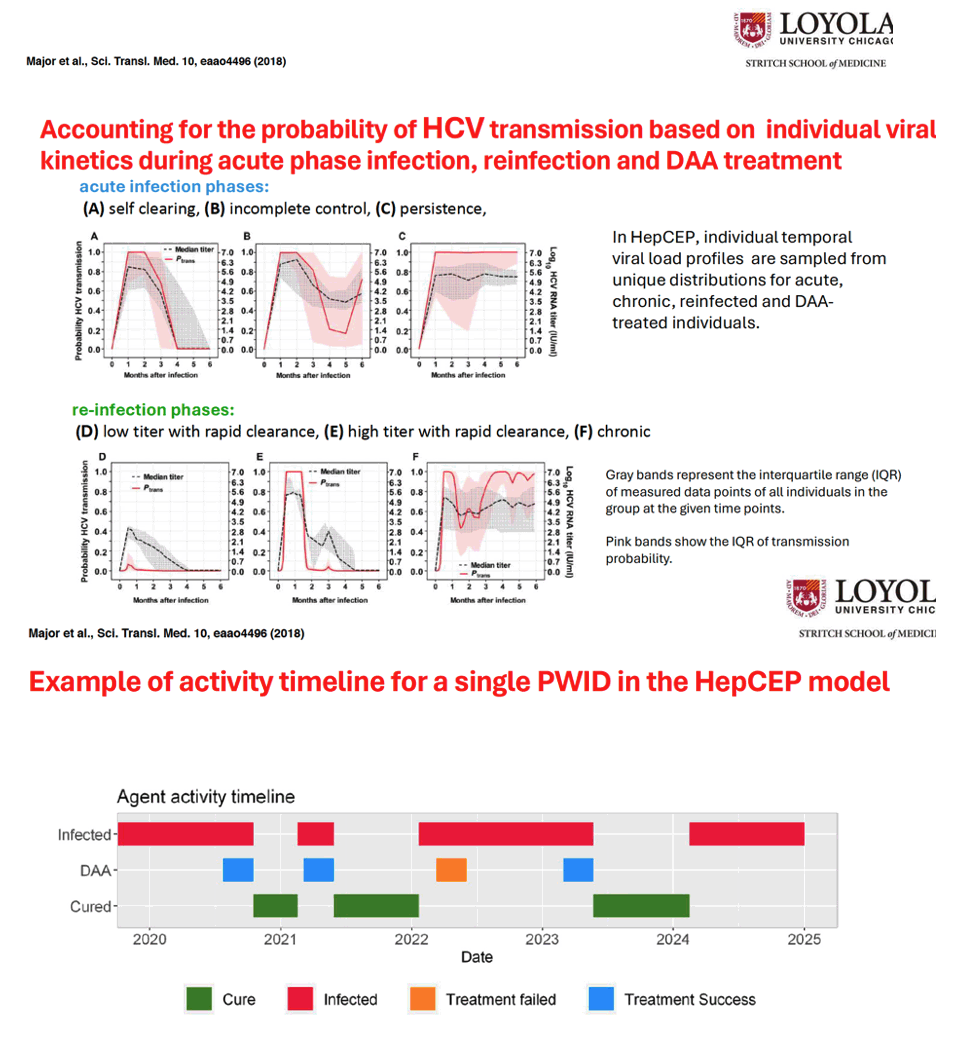
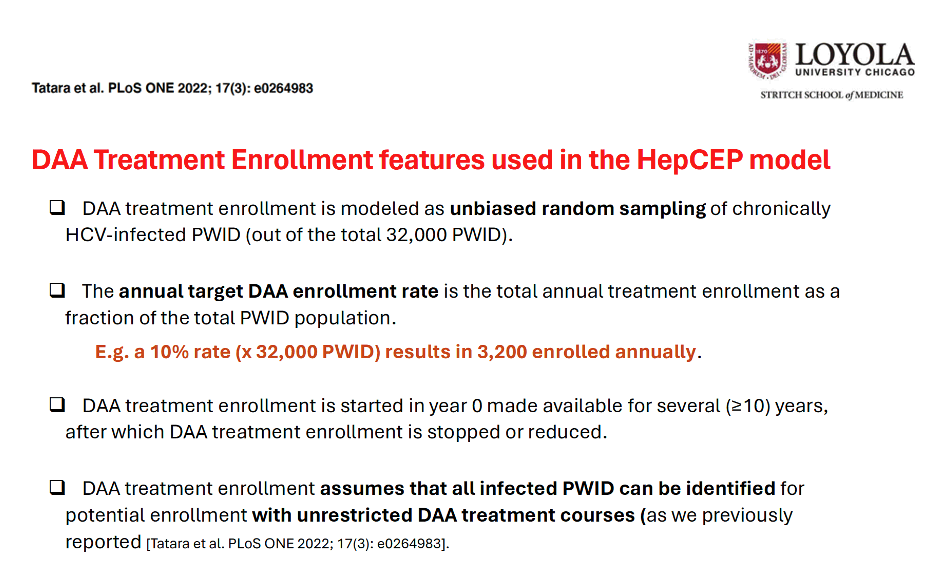
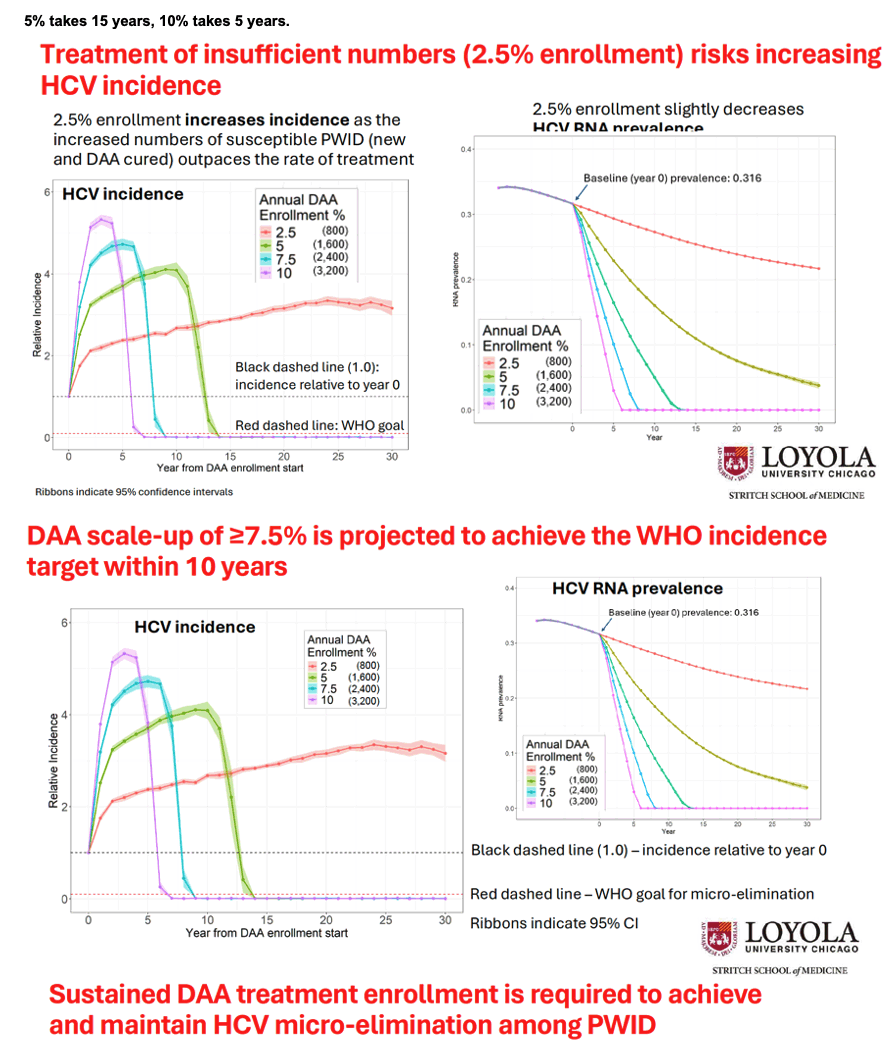
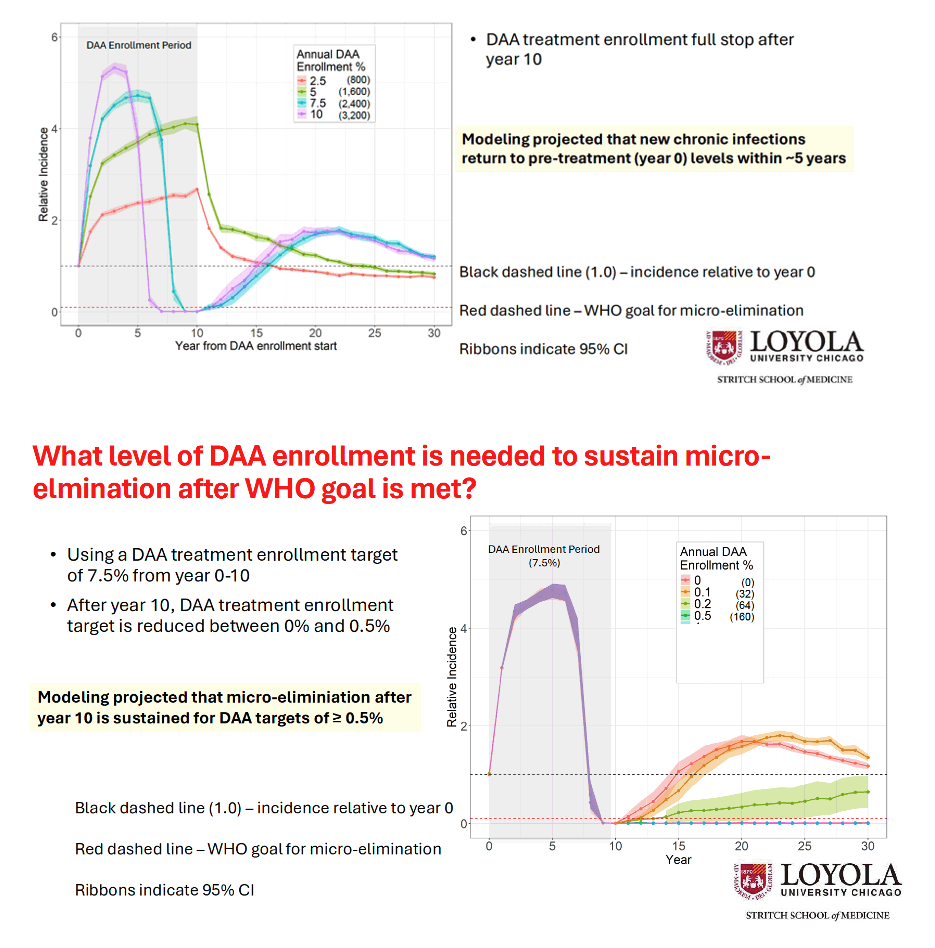
|
| |
|
 |
 |
|
|